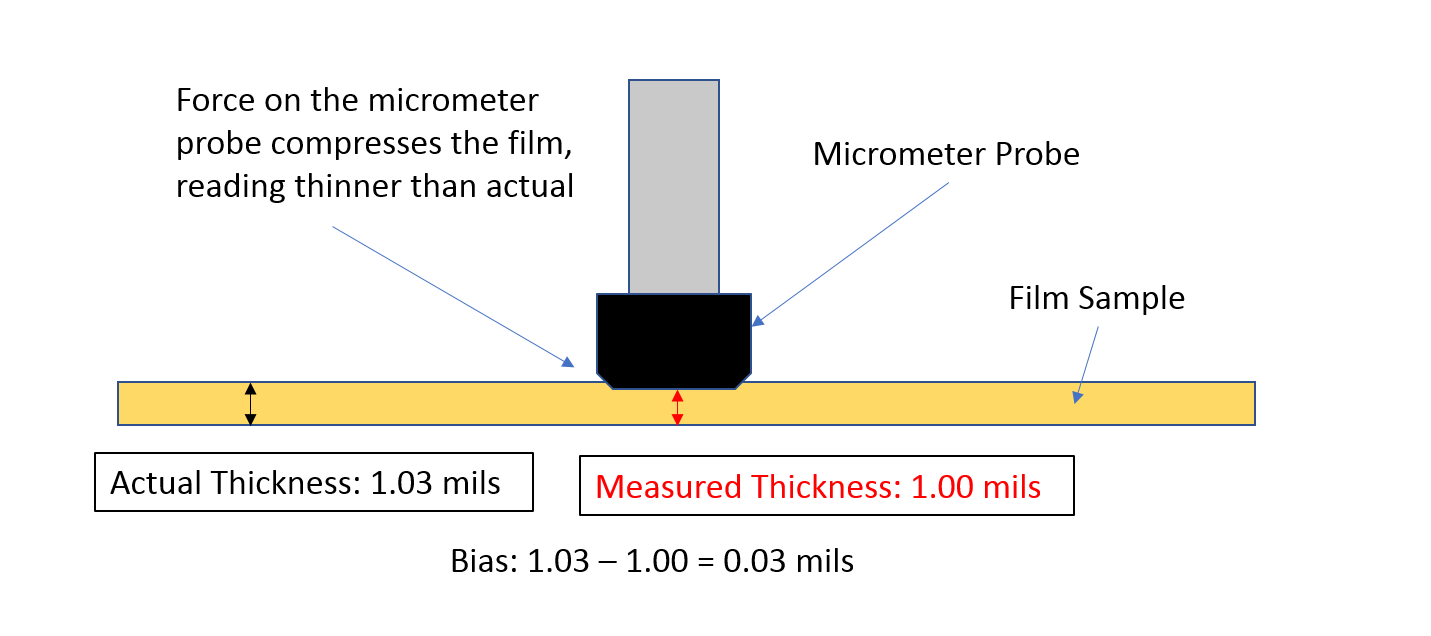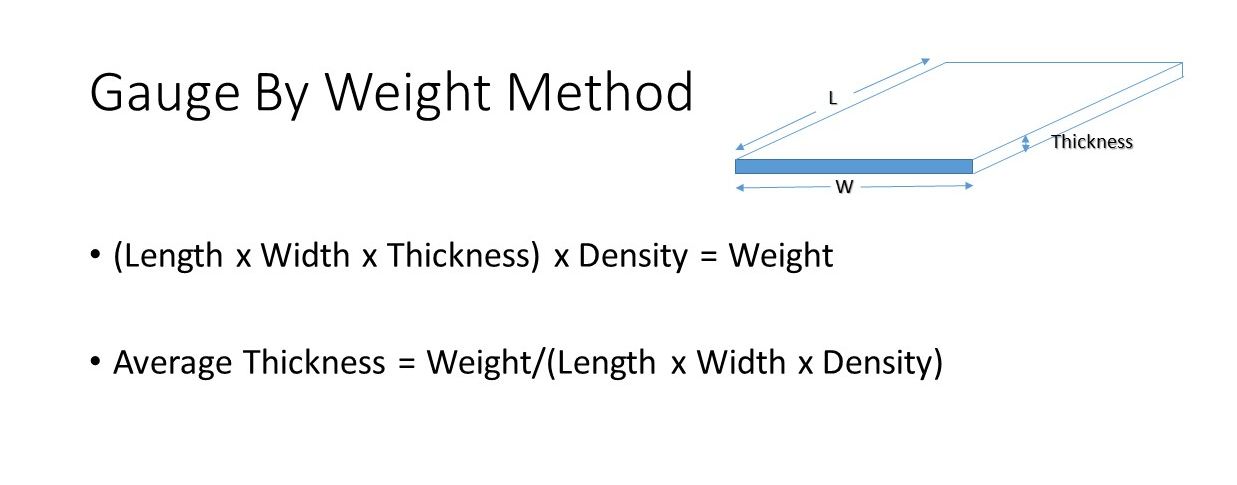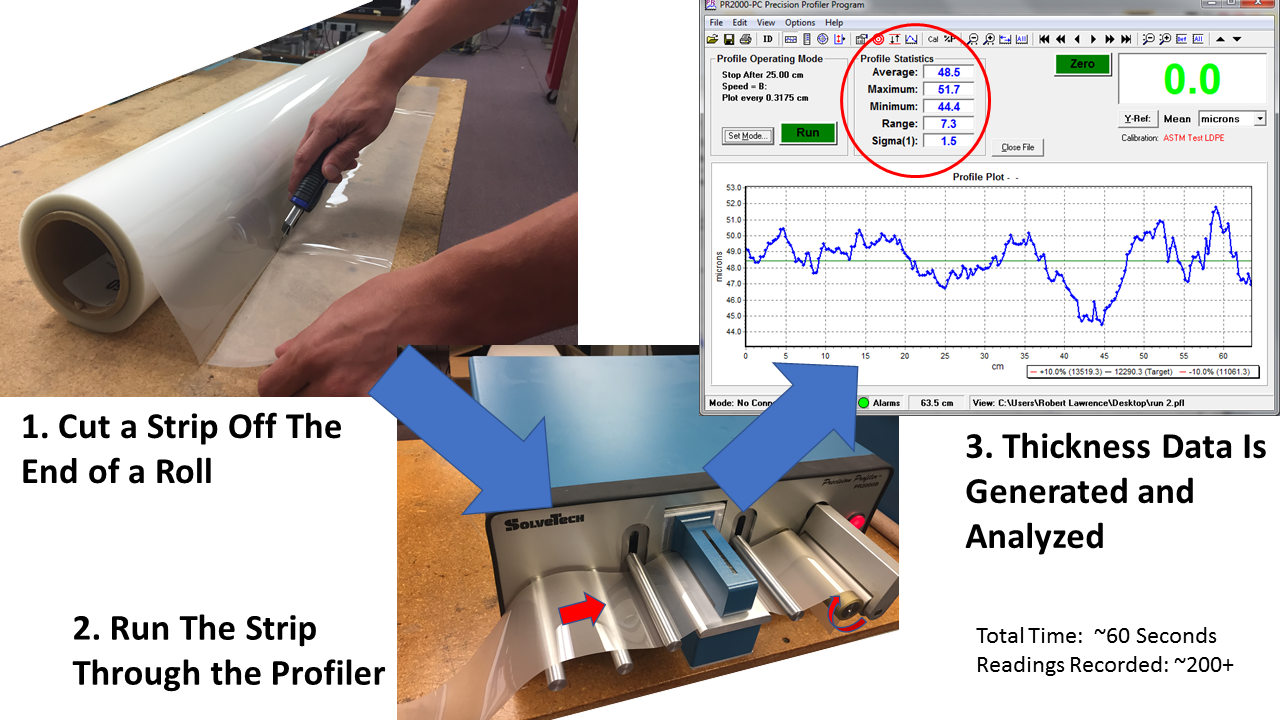Another common method for determining film thickness is using a micrometer, and this method is described in D6988. Micrometers are relatively inexpensive, and the concept behind them appears simple, but measuring plastic film creates a number of issues. With thicker films, many of these issues are not as big of a problem, but with thinner films, micrometers present some serious limitations.
One of the most serious problems is the precision and bias of the reading. Since plastic films are often under 1 mil (25 microns) thick, and a good micrometer has a precision of +/- 0.05 mils, the micrometer in many cases is only precise to +/- 5% of the material thickness. The precision gets worse on a percentage basis as a film gets thinner, and films under 1 mil thick are fairly common.
When looking at the bias, a compression of 0.03 mils, is 3% of the overall material thickness. This is illustrated below.

D6988 does not make a precision or bias statement since there are so many factors to consider. The user can test for and determine the bias, and then try to account for it. Otherwise, they are making their material 3% too thick, and this is a serious loss in some industries where profit margins are under 10%.
Other practical issues with using a micrometer include dirt getting on the probe, the speed of the measurements, and possible poor reproducibility from operator to operator. D6988 is best for films over 2 mils thick that do not need a comprehensive profile performed.
 This is considered the real average thickness of the film. One of the main limitations is that it is time consuming and difficult to use to obtain the variability of the film. As film samples get very small or very large, it may be difficult to measure their cross-sectional area accurately.
This is considered the real average thickness of the film. One of the main limitations is that it is time consuming and difficult to use to obtain the variability of the film. As film samples get very small or very large, it may be difficult to measure their cross-sectional area accurately.
